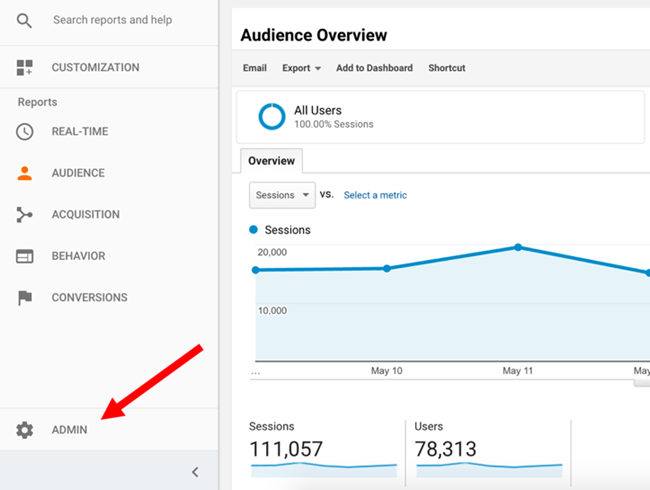A Total Guide to Remarketing In Google Analytics
A Total Guide to Remarketing In Google Analytics
Blog Article
Utilizing Remarketing in Google Analytics: A Comprehensive Guide
Using remarketing in Google Analytics offers companies a calculated edge in getting to out to possible customers. This overview will lose light on the essential steps entailed in using the full capacity of remarketing in Google Analytics, leading to boosted marketing end results.
Recognizing Remarketing in Google Analytics
Remarketing in Google Analytics permits companies to tactically target individuals that have actually previously communicated with their site or mobile application. By leveraging information from Google Analytics, businesses can create personalized remarketing listings based on individual behavior, such as web pages seen, activities taken, or particular goals attained. This powerful tool enables services to re-engage with users who have actually shown passion in their services or products, eventually boosting the likelihood of conversion.
Recognizing the different kinds of remarketing methods is vital for an effective campaign - What Is “Remarketing” In Google Analytics?. Google Analytics uses different choices, consisting of common remarketing, vibrant remarketing, and remarketing checklists for search advertisements (RLSA) Each type serves an one-of-a-kind function and can be customized to fulfill certain advertising objectives
Furthermore, examining the performance of remarketing campaigns is necessary for maximizing results. Google Analytics provides beneficial insights into the efficiency of different remarketing methods, allowing organizations to make data-driven choices and improve their targeting strategy. By continually checking and readjusting remarketing efforts based on analytics information, companies can maximize ROI and drive success in their advertising and marketing efforts.
Establishing Up Remarketing Campaigns

After establishing target market lists, the next action is to connect Google Analytics with Google Ads. By connecting these two systems, businesses can flawlessly move target market checklists from Google Analytics to Google Ads for remarketing functions. This assimilation enables even more accurate targeting and better campaign efficiency.
As soon as the accounts are linked, businesses can create remarketing campaigns in Google Ads making use of the target market lists formerly specified in Google Analytics. These campaigns can be customized with specific ad creatives, messaging, and bidding strategies to successfully re-engage with previous visitors and drive conversions. By complying with these steps, businesses can leverage the power of remarketing to enhance their marketing efforts and boost ROI.
Making Use Of Target Market Segmentation Approaches

Predefined sectors in Google Analytics enable you to promptly evaluate typical audience groups fresh users, returning users, or individuals that finished a details goal on your site. Personalized sectors, on the other hand, enable you to develop unique segments based on details requirements that are necessary to your organization objectives. Dynamic remarketing listings immediately readjust based on user habits, showing customized advertisements to individuals that have interacted with your site specifically ways.
Analyzing Remarketing Efficiency Metrics
Upon Our site evaluating the efficiency of remarketing campaigns in Google Analytics, the evaluation of key performance metrics gives important insights into target market engagement and conversion prices. By diving into metrics such as click-through prices (CTR), conversion prices, cost per procurement (CPA), and return on advertisement invest (ROAS), marketing professionals can evaluate the success of their remarketing efforts. Examining these metrics makes it possible for online marketers to optimize campaigns, improve target market great post to read targeting, and assign spending plans effectively to enhance general remarketing efficiency.
Optimizing Remarketing Methods
When refining remarketing approaches in Google Analytics, focusing on audience segmentation is extremely important for achieving campaign success. By splitting your audience into certain sectors based upon their actions, demographics, or interests, you can customize your ads much more efficiently to every team. This targeted strategy increases the possibility of involving users who have currently revealed passion in your services or items, causing higher conversion rates.
One more vital element of maximizing remarketing approaches is continually screening and refining your projects (What Is “Remarketing” In Google Analytics?). A/B screening various advertisement creatives, messaging, or offers can help you identify what reverberates ideal with your target market and drives one of the most conversions. By examining the efficiency of these tests in Google Analytics, you can make data-driven choices to enhance your remarketing efforts even more
Additionally, leveraging dynamic remarketing can considerably enhance your project results. This attribute enables you to show tailored advertisements to customers based on their past find communications with your internet site, showcasing product and services they have formerly watched. By providing tailored content to customers based on their behaviors and passions, vibrant remarketing can assist increase involvement and drive conversions.
Final Thought
To conclude, harnessing remarketing in Google Analytics is a calculated method to target customers that have formerly engaged with a web site. By producing tailored audience checklists and using audience division strategies, services can optimize remarketing projects for enhanced conversion prices. Analyzing efficiency metrics and continuously optimizing methods are essential for taking full advantage of the effectiveness of remarketing efforts.
Google Analytics uses different alternatives, including conventional remarketing, dynamic remarketing, and remarketing checklists for search advertisements (RLSA)After setting up target market listings, the following action is to link Google Analytics with Google Ads. By connecting these two systems, businesses can effortlessly transfer target market lists from Google Analytics to Google Ads for remarketing functions.As soon as the accounts are linked, services can develop remarketing projects in Google Advertisements making use of the audience details formerly specified in Google Analytics.When refining remarketing methods in Google Analytics, concentrating on target market segmentation is extremely important for achieving project success.
Report this page